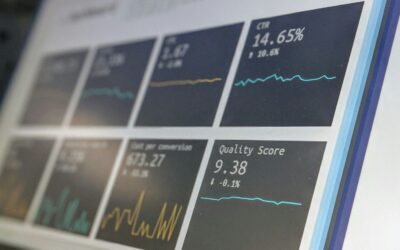Introduction
In today’s hyper-connected digital environment, brand reputation is one of the most valuable yet vulnerable assets a business owns. With the speed and reach of social media, online news platforms, and user-generated content, narratives about your brand can be shaped—and sometimes distorted—within minutes. Among the most challenging threats to brand reputation are fear-mongering and clickbait content. These emotionally charged forms of communication can amplify negativity, damage consumer trust, and trigger reputational crises.
This article explores how businesses can reduce reputation risks by leveraging lightweight, high-accuracy sentiment analysis tools to detect, analyze, and respond to fear-driven and clickbait content. We’ll dive into why fear-mongering and clickbait matter, how sentiment analysis works, and how organizations can integrate it into their reputation management strategies.
Understanding Fear-Mongering and Clickbait
What Is Fear-Mongering?
Fear-mongering is the deliberate use of fear-based messaging to influence public perception or behavior. It often exaggerates threats or manipulates emotions, leading to heightened anxiety and reactive decision-making. In the context of businesses, fear-mongering articles or posts can:
-
Spread misinformation about products or industries
-
Undermine consumer confidence
-
Trigger negative sentiment cascades across social platforms
What Is Clickbait?
Clickbait refers to sensationalized or misleading headlines designed to drive clicks rather than deliver genuine value. While not always harmful, clickbait often skews reality, creating distorted impressions of a brand or product. Potential risks include:
-
Loss of consumer trust when content doesn’t match expectations
-
Virality of negative or misleading narratives
-
Lowered brand credibility in the long term
Why Businesses Should Care
Fear-mongering and clickbait both thrive on emotional manipulation, and negative emotions—fear, anger, frustration—spread faster and more widely online than positive ones. A single viral headline can undo years of brand-building work. Thus, proactive monitoring and management are essential.
The Role of Sentiment Analysis in Reputation Management
Sentiment analysis is the automated process of identifying emotions, attitudes, and opinions in text. Traditionally used to gauge customer feedback, it has now become a powerful tool for tracking brand reputation across the digital ecosystem.
Traditional Models vs. Lightweight High-Accuracy Solutions
While models like BERT and other transformer-based architectures provide state-of-the-art performance, they demand significant computational resources. For businesses requiring real-time monitoring across millions of data points, heavy models may not be practical.
Lightweight sentiment analysis engines—like Sentivisor—offer:
-
>95% accuracy with only a fraction of the computational cost
-
Real-time scalability for large data streams
-
Easy integration into CRMs, social listening tools, and PR monitoring platforms
By efficiently identifying fear-driven and manipulative content, such tools allow businesses to take action before reputational risks escalate.
How Fear-Mongering and Clickbait Affect Brand Reputation
1. Accelerated Spread of Negative Narratives
Fearful or sensational content is inherently shareable. Studies show that negative news spreads 70% faster on platforms like Twitter compared to neutral news. For brands, this means that one misleading headline can overshadow dozens of positive stories.
2. Erosion of Consumer Trust
Consumers exposed repeatedly to fear-based messaging about a brand—whether accurate or not—become hesitant to engage. Trust, once lost, requires extensive investment in PR and customer engagement to rebuild.
3. Amplification by Algorithms
Social media algorithms reward engagement. Unfortunately, fear and outrage drive more engagement than neutral tones. This creates a self-reinforcing cycle where damaging narratives gain disproportionate visibility.
4. Long-Term Brand Devaluation
Beyond short-term crises, consistent association with fear or misinformation can reduce a brand’s perceived stability and value. Investors, partners, and customers may reconsider long-term commitments.
Practical Applications of Sentiment Analysis for Risk Reduction
1. Early Detection of Harmful Narratives
Sentiment analysis tools can flag spikes in negative emotions—fear, anger, frustration—across online mentions of a brand. For example:
-
A sudden surge of fear-related keywords (“danger,” “unsafe,” “harmful”) in product reviews can signal potential misinformation campaigns.
-
Identifying clickbait-style headlines linked to the brand allows communication teams to respond quickly with clarifications.
2. Automated Monitoring Across Channels
Deploying sentiment analysis across multiple platforms ensures comprehensive coverage:
-
Social Media Monitoring: Twitter, Facebook, TikTok, Instagram
-
News and Media Outlets: Detecting fear-driven journalism or misleading press coverage
-
Forums and Communities: Reddit, specialized consumer groups
3. Real-Time Alerts for Crisis Management
Integrating sentiment analysis with internal dashboards enables automated alerts when fear-mongering content begins to trend. Communication teams can then:
-
Publish clarifying statements
-
Engage directly with users spreading misinformation
-
Activate crisis response protocols
4. Benchmarking Against Competitors
Sentiment analysis also allows businesses to compare their brand reputation against competitors. By understanding how often competitors are targeted by clickbait or fear-driven narratives, companies can benchmark resilience and refine PR strategies.
Case Study Examples
Example 1: Consumer Electronics Brand
A consumer electronics company detected a sudden spike in posts labeling one of their devices as “unsafe” following a viral video. Sentiment analysis revealed that 80% of the negative content originated from just two forums amplifying a misleading story. Early detection enabled the company to issue clarifications, share independent safety reviews, and prevent a full-blown reputational crisis.
Example 2: Financial Services Firm
A financial firm faced clickbait headlines suggesting a looming collapse. Sentiment analysis flagged an abnormal increase in fear-related keywords (“bankruptcy,” “unstable,” “collapse”). With proactive PR engagement and transparent communication, the firm maintained customer trust and limited financial damage.
Example 3: Healthcare Provider
A healthcare provider used sentiment analysis to track misinformation campaigns around vaccines. Identifying fear-based narratives early allowed them to collaborate with trusted health organizations to counteract disinformation, preserving credibility and public trust.
Best Practices for Implementing Sentiment Analysis in Reputation Management
1. Define Clear KPIs
Measure effectiveness not only by sentiment scores but also by tangible outcomes:
-
Reduction in misinformation spread
-
Speed of crisis response
-
Recovery of brand trust post-incident
2. Integrate Into Existing Workflows
Sentiment analysis is most effective when embedded into existing PR, marketing, and customer service workflows. Automated alerts should trigger immediate review by communication teams.
3. Focus on Precision, Not Just Recall
For reputation management, false positives (flagging neutral content as negative) can drain resources. Lightweight, high-precision tools reduce noise and allow teams to focus on genuine threats.
4. Combine Human Oversight With AI
While automated sentiment detection provides speed and scale, human judgment is critical in interpreting nuance. Hybrid approaches—AI for detection, human experts for contextual response—deliver the best results.
5. Educate Teams Across Departments
Reputation management is not solely a PR function. Marketing, legal, compliance, and even HR should understand how to use sentiment analysis insights for proactive brand protection.
The Business Case for Lightweight Sentiment Analysis
Cost Efficiency
Running advanced transformer models at scale can cost millions annually in compute resources. Lightweight alternatives with >95% accuracy provide nearly the same quality at 1/1000th of the cost.
Scalability
Because of their low resource footprint, lightweight models can run across vast datasets in real time, something heavyweight models struggle with.
Accessibility
Businesses of all sizes—not just enterprises with deep budgets—can deploy high-quality sentiment monitoring, democratizing reputation management capabilities.
SEO Benefits of Monitoring Fear-Mongering and Clickbait
Beyond direct reputation protection, sentiment analysis offers SEO advantages:
-
Identifying clickbait headlines about your brand allows you to publish optimized counter-content, ensuring accurate narratives rank higher in search results.
-
Monitoring negative trends provides opportunities to produce thought-leadership content that addresses concerns and builds authority.
-
Continuous sentiment tracking contributes to ongoing content strategy refinement, aligning brand messaging with audience emotions.
Future Outlook: From Sentiment to Emotion Intelligence
The next stage of reputation management goes beyond positive/negative sentiment into emotion intelligence—detecting fear, joy, anger, surprise, and trust with high accuracy. For businesses, this means:
-
Anticipating customer reactions before they escalate
-
Customizing messaging by emotional profile
-
Building truly resilient brands in an emotionally volatile online world
Lightweight engines like Sentivisor pave the way by making real-time emotion analysis affordable and scalable.
Conclusion
Fear-mongering and clickbait are not just nuisances—they represent tangible risks to brand reputation, customer trust, and long-term business value. In a world where negative content spreads faster than truth, businesses must move from reactive damage control to proactive sentiment monitoring.
Lightweight, high-accuracy sentiment analysis solutions offer the ideal balance between precision and scalability. By embedding these tools into PR, marketing, and crisis management workflows, organizations can:
-
Detect harmful narratives early
-
Reduce the amplification of negative sentiment
-
Protect brand trust in the face of emotionally manipulative content
In short, reputation resilience in the digital era depends on the ability to detect and disarm fear-driven and clickbait narratives before they erode consumer confidence. With the right tools and strategies, businesses can stay ahead of reputational risks—and turn challenges into opportunities for trust-building and growth.










